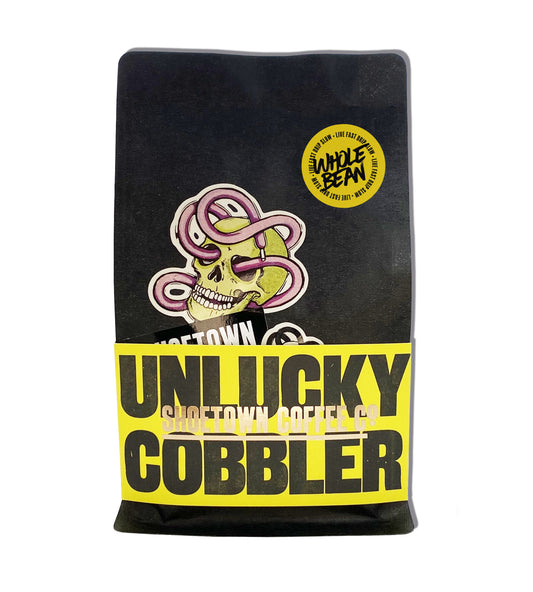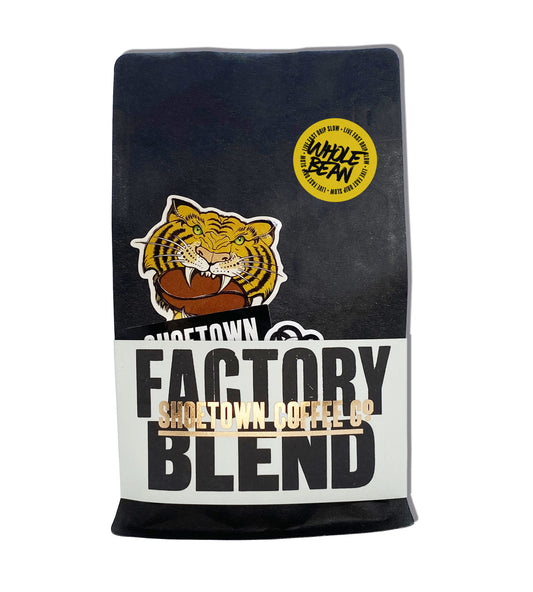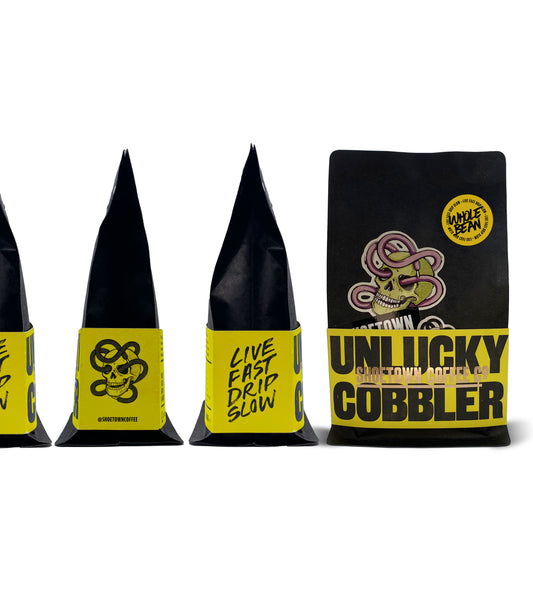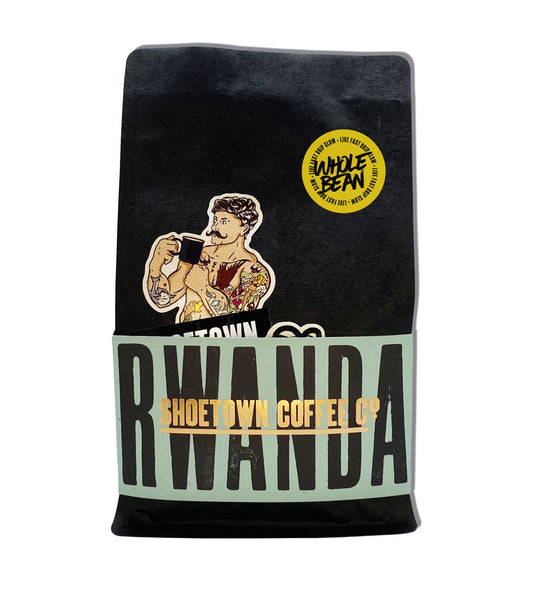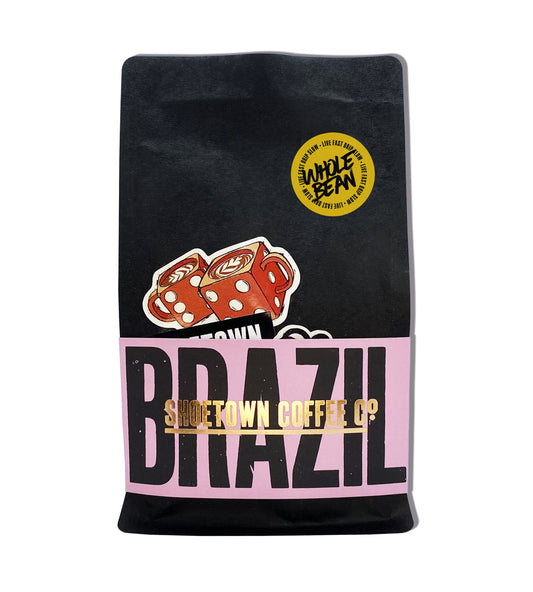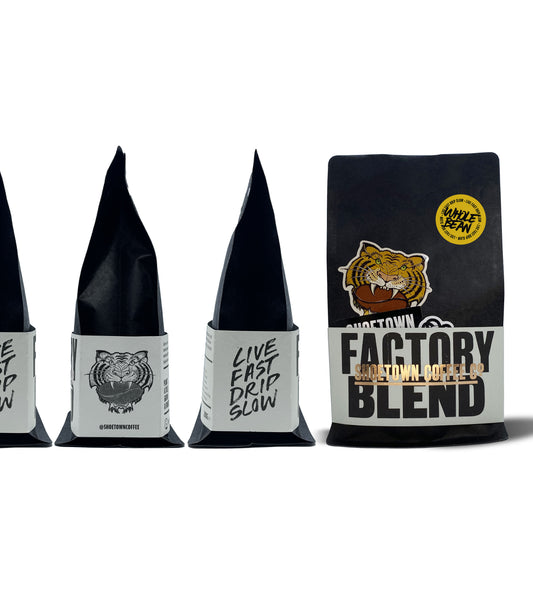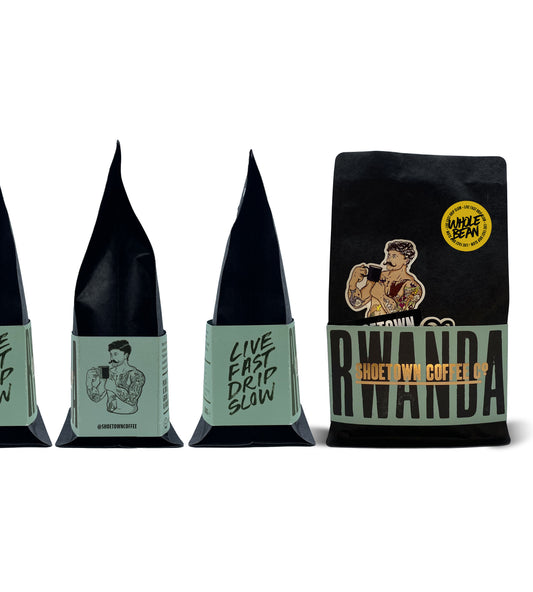Coffee Basics: Varieties

Coffee Basics: Varieties
BY SHOETOWN COFFEE PUBLISHED SAT 23 MAR 25
A coffee variety is simply a name given to a type of coffee tree, It’s a bit like apples, different types of apple trees will produce different types of apples. As we speak there’s over 120 different species of coffee trees currently identified with only two that are commonly grown commercially, Coffea Arabica and Coffea Canephora, better known as Robusta. When talking craft coffee though we’re interested in the most interesting species. Coffea Arabica.
Technically it’s a shrub but you’ll also hear it referred to as a tree or bush. Arabica grows in dozens of countries or what’s generally referred to as coffee growing regions along whats known as the coffee belt, spanning the sub-tropical regions either side of the equator, basically it thrives in warm tropical climates at high altitudes. Think, the high misty mountains of Ethiopia and the lush rainforests of Colombia. Arabica tends to contain less caffeine than Robusta but provides a complexity unlike anything else.
Probably the most well known variety of Arabica is Typica and is generally conisdered the OG. Typica was the variety of the coffee trees first discovered in the hills of Ethopia. This same variety is still widely grown today although you’ll also find many different varieties of Arabica which have come from Typica, some natural mutations and others the result of cross breeding.
These different varieties are what you’ll find displayed on the coffee bags you buy, it’s more of a nice to know rather than a need to know. Although each of these varieties do bring different flavours, body and sweetness, the variety is often chosen for practical reasons instead. Each variety yield different amounts of fruit, in a host of different colours, some carry their fruit in clusters while others are evenly spaced down the branch and some will grow shorter than others making it easier to hand pick the cherries when it comes to harvesting. Where the trees are grown and it’s microclimate tend to play a much bigger part in the flavour of it’s fruit over the varitey itself.
There’s are stack of different varieties, but here’s a few you should get to know first
Typica
The one that started it all. The OG. First cultivated in Ethiopia and spread around the world by the Dutch. It tends to produce a relativley small yield and is susceptible to pests and disease, but what it lacks in yield it makes up for in flavour. Typica is known for producing a clean, sweet, and complex cup. It’s still grown all over the coffee belt and, despite its challenges, it’s loved for the quality it brings to the cup and the high prices it can secure.
🌿 Stature: Tall
🫘 Bean Size: Large
📈 Yield Potential: Low
⛰️ Optimal Altitude Range: 1000–2000m
🛡️ Disease Resistance: Low
Bourbon
A natural mutation of Typica that first popped up on the island of Réunion (then called Bourbon), an island off Madagascar, and it’s become one of the most loved coffee varieties out there. It grows well at high altitudes, has a higher yield than Typica, and is especially prized for its distinctive sweetness and well-rounded flavour. You’ll spot different variations of Bourbon such as red, yellow, and sometimes orange Bourbon, and while it’s not as high-yielding as some modern hybrids, the cup quality more than makes up for it. It’s still grown in many parts of the world and remains a go-to for those looking to produce something truly special.
🌿 Stature: Tall
🫘 Bean Size: Medium
📈 Yield Potential: Moderate
⛰️ Optimal Altitude Range: 1100–2000m
🛡️ Disease Resistance: Low
Mundo Novo
A natural hybrid of Typica and Bourbon, first discovered in Brazil back in the 1940s. It’s a strong, high-yielding variety that handles disease and rough conditions better than its parents, which is why it's still widely grown today. It performs especially well at altitudes of 1,000–1,200 metres, making it a perfect fit for much of Brazil’s coffee-growing landscape.
🌿 Stature: Tall
🫘 Bean Size: Medium
📈 Yield Potential: High
⛰️ Optimal Altitude Range: 1000–1200m
🛡️ Disease Resistance: Moderate
Caturra
This is a mutation of Bourbon, discovered in Brazil in the 1930s. Often called a dwarf or semi-dwarf, it’s a low growing variety that makes it much easier to pick by hand. Caturra thrives at higher altitudes, making this especially popular in Colombia and Central America. There are both red and yellow variations and it’s yeilds are relatively high with good cup quality although as the quality increases with altitude the yield decreases.
🌿 Stature: Dwarf
🫘 Bean Size: Medium
📈 Yield Potential: Moderate
⛰️ Optimal Altitude Range: 1000–1800m
🛡️ Disease Resistance: Low
Catuai
This is a hybrid between Caturra and Mundo Novo developed by the Instituto Agronomico in Brazil in the 1950s and 1960s. It takes the best of both its parent varieties with the dwarf characteristics of Caturra and the yield and strength of Mundo Novo. Like Caturra, there are red and yellow varieties.
🌿 Stature: Dwarf
🫘 Bean Size: Medium
📈 Yield Potential: High
⛰️ Optimal Altitude Range: 600–1300m
🛡️ Disease Resistance: Moderate
Maragogype
Maragogype (pronounced “mara-go-jeep”) is a natural mutation of Typica, first discovered in Brazil and it’s hard to miss. It’s a very desirable variety due to its unusually large bean size, nicknamed ‘Elephant’ or ‘Elephant Bean’, it’s one of the easiest varieties to recognise. The trees themselves are big too, with large leaves and fruit, but despite their size, they tend to produce a relatively low yield.
🌿 Stature: Tall
🫘 Bean Size: Very Large
📈 Yield Potential: Low
⛰️ Optimal Altitude Range: 1200–1500m
🛡️ Disease Resistance: Low
SL28
SL-28 is a legendary variety that originated in Kenya in the 1930s, and it’s one of the most celebrated coffees in the speciality world. Developed by Scott Agricultural Laboratories (now the National Agricultural Laboratories, NARL situated at Kabete), it was selected for its resistance to drought and potential to thrive at high altitudes although it’s susceptible to the major diseases of coffee like leaf rust. It produces large, red cherries and is known for its distinctively fruity, citrusy cup profile—often with bold blackcurrant or berry-like flavours that make it a standout on the cupping table.
🌿 Stature: Tall
🫘 Bean Size: Large
📈 Yield Potential: Very High
⛰️ Optimal Altitude Range: 1500–2100m
🛡️ Disease Resistance: Low
SL34
SL-34 is another standout from Kenya’s coffee breeding program, developed in the 1930s by Scott Agricultural Laboratories. Selected from French Mission Bourbon, brought back to Africa from Réunion, SL-34 is genetically related to Typica and performs best at high altitudes with plenty of rainfall. It’s known for its high yield and excellent cup potential, with distinct fruity flavours though it’s generally considered inferior to SL-28. Similar to SL-28 it’s also susceptible to major coffee diseases.
🌿 Stature: Tall
🫘 Bean Size: Large
📈 Yield Potential: High
⛰️ Optimal Altitude Range: 1400–2000m
🛡️ Disease Resistance: Low
Gesha
Gesha, or sometimes referred to as Geisha, theres a bit of a debate over the correct name, is a heirloom variety thought to be originally from Ethiopia, brought to Panama from Costa Rica and was made famous after a Panamanian farm, Hacienda La Esmeralda, shocked the coffee world in 2004 earning a record-breaking auction price of $21/lb then $130/lb in 2006 and 2007 almost 100x more than a commodity grade coffee. Despite its low yield, delicate branches, and pest susceptibility, Gesha thrives at high altitudes and produces truly exceptional results when grown well. With notes of jasmine, and stone fruit, it remains one of the most sought-after and prestigious varieties in specialty coffee.
🌿 Stature: Tall
🫘 Bean Size: Medium
📈 Yield Potential: Low
⛰️ Optimal Altitude Range: 1600–2000m+
🛡️ Disease Resistance: Low
Pacas
Pacas is a natural mutation of Bourbon, discovered in 1949 by the Pacas family in El Salvador’s Santa Ana region. Similar to Caturra, it carries a dwarf mutation, making the plant smaller and picking easier while allowing for denser planting and higher yields. Pacas has been widely adopted in El Salvador accounting for about 25% of the country’s coffee production. With cup quality similar to Bourbon and compact growth, it’s a favourite among producers looking to balance quality and productivity.
🌿 Stature: Dwarf
🫘 Bean Size: Medium
📈 Yield Potential: Moderate
⛰️ Optimal Altitude Range: 1000–1600m
🛡️ Disease Resistance: Low
Pacamara
Pacamara is a hybrid of two very different parents: the compact, high-yielding Pacas and the large-beaned Maragogype. Developed in El Salvador in 1958 by the Salvadoran Institute for Coffee Research (ISIC), it was bred to combine the big bean size and cup complexity of Maragogype with the manageable growth and productivity of Pacas. The result is a bold, often unpredictable variety that can, when done right, produce exceptionally rich, complex coffees, it frequently dominates Cup of Excellence competitions for high cup quality.
🌿 Stature: Dwarf
🫘 Bean Size: Very Large
📈 Yield Potential: Moderate
⛰️ Optimal Altitude Range: 1300–1800m
🛡️ Disease Resistance: Low
Final Thoughts
There’s a whole world of coffee varieties out there each with its own backstory, quirks, and potential in the cup. Whether it’s the delicate florals of Gesha, the bold fruity flavours of SL-28, or the compact efficiency of Pacas, these varieties are just one part of what shapes the flavour in your cup. While factors like altitude, microclimate, and processing play a huge role, getting to know the trees behind your brew adds another layer of appreciation to every sip.

